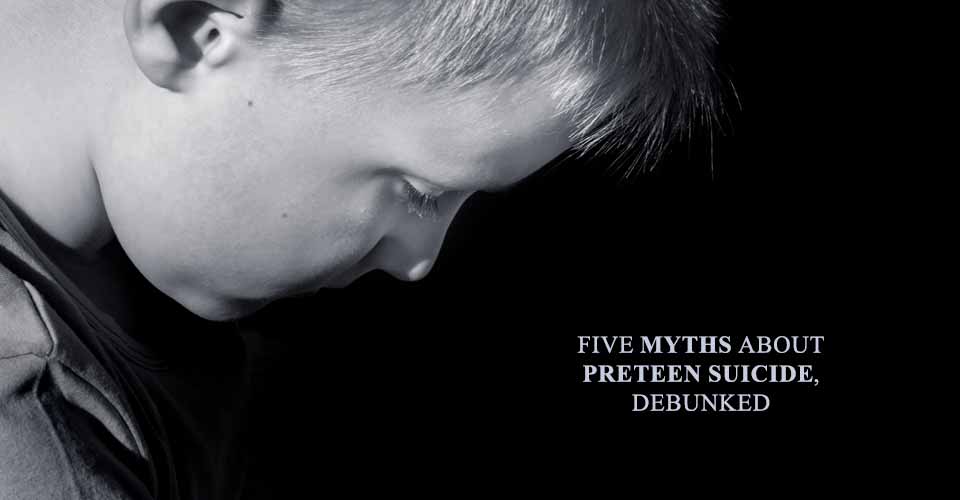
There are many misconceptions when it comes to preteen suicide.
The most dangerous one is that it doesn’t exist. In fact, in the United States alone, 425 children ages ten to fourteen died of suicide in 2014 – and many more attempted it. Preteen suicides are increasing at an alarming rate. Awareness and prevention measures, unfortunately, are not keeping up.
“Intelligence is sexy” t-shirt?!
Here are five myths about preteen suicide, debunked:
Myth: Children cannot be suicidal.
Fact: Children as young as five are capable of planning and executing a suicide. Their thought process is different from that of an adolescent, but sadly the result is the same. Suicide is the third leading cause of death in twelve-year-old children. Additionally, 657 five-to-eleven-year-old children committed suicide between 1993 and 2012, and rates have been increasing rapidly since then.
Myth: When a child commits suicide, it is an impulsive act. They don’t plan for it to happen.
Fact: Suicidal children often share their fantasies and idealizations with their friends. They may hint at their plans in a school project or make an inappropriate joke to a teacher. For this reason, it is important to discuss the danger of secrets with young children. Make it clear that if a friend is in danger from a secret, they should not keep that secret safe. It is also important to speak frankly with your child’s teachers if you are concerned about their mental health.
Myth: Preteen suicides cannot be prevented.
Fact: The first step in preventing a child’s suicide is to take the issue seriously. Look for warning signs. These can include depression, insomnia, a loss of focus, secretive behavior, and irritability. They may become more violent, or engage in high-risk behavior. A child who starts to give away prized possessions is likely at risk. They may withdraw from friends and activities that they once loved. If you have concerns about your child, bring them to a mental health professional immediately.
Myth: Suicide is always the result of a deep neurological depression.
Fact: Depression is certainly a factor in many suicides. However, especially when it comes to children, depression is not always the culprit. Many suicidal children suffer from risk factors that do not correlate with depression. Specifically, suicidal children are found, as a group, to be very intelligent, socially isolated, aggressive, and highly vulnerable to criticism. Many were found to be struggling with sexual confusion. Others had endured abuse, or had a family history of mental illness and suicidal behavior. These children often displayed antisocial behavior and experienced problems in school.
The Link Between Concussions and Suicide
Myth: Speaking with children about suicide makes them more likely to consider it as an option.
Fact: We like to pretend that suicide is not a part of a child’s world. Unfortunately, it is. Speak candidly with your child about what suicide means. Let them know that if they are ever having thoughts of suicide, they can speak to you or another trusted adult. Encourage them to come to you if a friend has been contemplating suicide. There is a deep stigma surrounding this topic that can make honest communication difficult. Let them know that you are a safe space.
“Sometimes even to live is an act of courage,” wrote Seneca. Be courageous yourself, and give this power to your child. Speaking with a young person about suicide is not easy. However, it may someday save a life.


